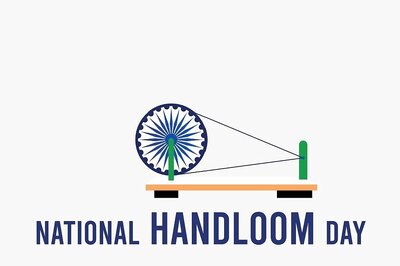
views
New Delhi: A list of essential diagnostics could keep in check the rampant over-testing and over-diagnosing that patients face today. “To an extent, it could curb it,” said Dr. Vinod Paul, member, health, of the NITI Aayog.
The process to create a list of essential diagnostics— similar to the list of essential medicines that are price controlled by the government—kicked off last week, spearheaded by the Indian Council of Medical Research (ICMR), with support of the WHO.
The WHO, 40 years after drafting the Essential Medicines List (EML), has started work on an Essential Diagnostics List (EDL), which will guide countries as to which diagnostic services, which tests and procedures and therefore, which equipment, is most essential to their public healthcare.
India is the first country to have simultaneously started work on a national EDL. Dr. Madhukar Pai, Director Global Health Programmes at McGill University in Canada, who was part of the consultation told News18, “The big picture is that essential medicines need essential diagnostics, and I am happy that India would be the first country to develop a National EDL (NEDL). WHO, Geneva, is starting the global EDL development process next month, and we have to wait and see how the global list aligns with India’s NEDL.”
The idea behind such a list, said Dr. Paul, is to have “rational and strategic” procurement and production of diagnostics tools, which will “stimulate rational use”.
Such regulation will mean a doctor cannot order an MRI on a patient before doing a chest X-Ray, Paul gave an example. Though the process is in very early stages, both Paul and Pai pointed out it started officially on March 12, it will go a long way in strengthening not only primary healthcare but overall public healthcare.
The challenge, however, said Dr. Kamini Walia, a scientist with the ICMR, will be getting a consensus. Drafting one list for all states will be a difficult task given the considerable heterogeneity in their disease burdens, she said. The government will also have to address the availability of infrastructure and human resource to implement at primary level.
But figuring these out, said Paul, understanding diagnostic needs of different areas, means systems can be put in place accordingly. The equipment, however light or bulky can be sourced —i.e produced and manufactured—locally.
There is no clarity yet on what diagnostics can be considered essential, or what such a filtering process, as this first meeting on March 12 at the ICMR focused on a range of communicable and non-communicable disease. However, said Dr. Walia, discussions were had keeping in mind the growing burden of non-communicable diseases. “We need few more rounds if discussion to decide on the first draft list,” she said.
“The EML,” said Dr. Pai, “has taken many years to become an effective tool for price control and improved access to medicines. I suspect the EDL will also need to be iterated and improved over time, along with complementary actions (e.g. a diagnostics formulary, standardised treatment guidelines, price control mechanisms, better regulation of IVDs, etc) to realise its potential.”




















Comments
0 comment